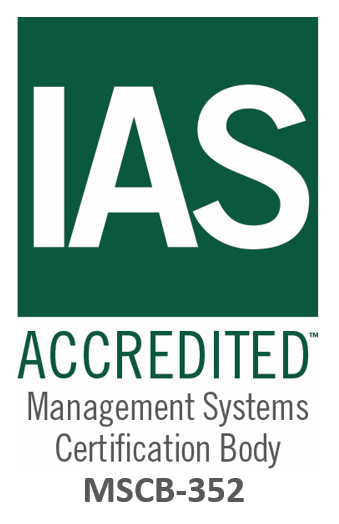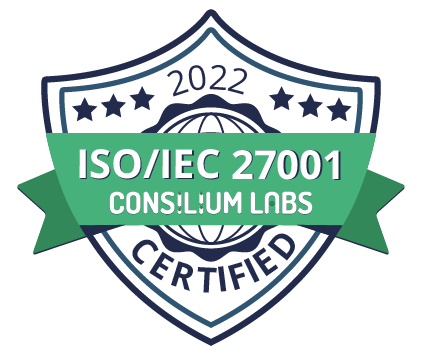I shall be telling this with a sigh
Somewhere ages and ages hence:
Two roads diverged in a wood, and I—
I took the one less traveled by,
And that has made all the difference.
Robert Frost, The Road Not Taken
At the time of writing, Radiant Law is ten years old. I’ve been meaning to write about our experience for some time, but have been spurred into action by an important article by Neville Eisenberg and Richard Susskind, two statesmen of change in the legal industry. The piece argues for “vertically integrated legal services” and although there is plenty I agree with, some parts just don’t jibe with our experiences. So let me offer an alternative take based on what we’ve learned at Radiant Law.
I recommend reading the article in full, but the argument goes something like this:
- There is a high demand within in-house teams for a new solution to help them do more for less, but it hasn’t been met by the alternative legal service providers who still only have 1.5% of the market and haven’t seriously scaled.
- The best explanation for this is that although ALSPs tried to pick off low tier routine work and disaggregate parts of complex work, it hasn’t worked because (a) you still need lawyers involved in every type of work, which ALSPs apparently don’t have (especially in the US with its unlawful practice of law (UPL) rules) and (b) clients anyway just want to buy from one provider.
- Therefore you need to have a vertically-aggregated model combining lawyers with process and tech, so the solution is for law firms to add people with additional skills, move to fixed pricing, and take tech and knowledge management seriously.
Let me start with where we agree. Eleven years ago, I was running around London pulling a team together to start Radiant Law. I kept drawing this picture on napkins (or arranging glasses, pubs were admittedly involved):

My argument was that if we were going to actually start solving client’s demands, we needed to pull together into one place legal judgement calls, LPO’s process capabilities and tech skills. It also had to be fixed price to align incentives with the client and we had to take technology and knowledge management seriously, and it would help to be a law firm.
So that’s what we built, starting ten years ago.
So where do I differ from Mr Eisenberg and Professor Susskind? Well, the thing is that you can’t build the law firm they are describing starting with, well, a regular law firm. Why? Because:
- to make it work, you need to radically change how lawyers operate, the incentives that apply and how decisions are made, but
- partnership models are perfectly designed to protect the current power structure and resist change, with the most successful under the old model holding the reins.
The clue is in the difference between the napkin above which didn’t have a “top” and the picture the authors are proposing:

Here are some problems with putting traditional lawyers in charge:
- Traditional lawyers at law firms literally have no clue how to make everyday contracting (our speciality) go fast. We now generally hire only junior lawyers because it is too hard to reprogram senior lawyers who tend not to take it well when you explain that pretty much everything that they have learned to date from their firms is wrong.
- Traditional law firms are structured for the bespoke and are in no rush to do anything. It takes a typical large law firm about two days to complete a conflict check and this can extend to weeks (more on this below).
- Traditional law firms aren’t optimised for cooperation, they are optimised for autonomy of partners. Good luck telling them that they all have to work in the same way, a fundamental for doing routine work. Good luck getting them to switch to fixed fee only and ditching time sheets (despite being talked about for decades, can you name one large firm that has done it?).
In addition to these challenges, the authors are over-blowing the problems with UPL in the US. There are many ways around this now from the shifting regulatory sands state by state, Elevate Next’s model and other regulatory “loopholes”, but most of all by the fact that you can distinguish between expertise in contracting generally and specific local law rules, and clients are happy to supervise via playbooks the work done by non-local lawyers.
But here’s the kicker: if I believe in the general model (which I do) then why is Radiant Law so damned small (about 50 people)? The authors have a point that scale is an excellent indication of successfully meeting demand. And my best answer is: be patient.
Jeff Bezos once observed that “all overnight success takes about 10 years” and funnily enough the Radiant delivery team has trebled in the last nine months. If you talk to entrepreneurs, you will hear oft-repeated patterns of the kind of (often fatal) bumps in the road that companies go through, and we’ve experienced most of them. But what has taken the longest time was taking the hard and untread road of building a new kind of business structure. We are very different inside, but it took us at least seven years to make it work. As just some examples of the differences:
- Radiant Law is a company, so no partners and a simple management structure. The executive committee only has four members with marketing, sales, delivery and business services representatives.
- We are "flat-ish". Our org chart is just a big circle underneath the executive committee and we push down decision making and responsibility as far as possible. Official reporting lines for the team are to the relevant executive committee member - there is no other mgmt layer and a strong emphasis on self-management.
- We don't have timesheets and don't reward on hours. Bonuses are an automatic 10% paid to everyone. Everyone gets shares after a year. We follow Theory Y, not X.
- We prioritise cooperation over control or autonomy (and we live all the tensions and contradictions inherent in this picture from Robert Keidel). There is an emphasis on teams, working in a common way, and everyone being part of improving the way we work.
- We don't really talk about lawyers internally (nor do we use the innovation word much). There are individuals who deliver matters and they work with developers who do software and a data analyst who analyses data and legal engineers who help automate things. If you need help from others, just ask on Slack. We have account leads and project leads and whatever leads, rather than managers (outside excom). Your responsibilities come from the particular hat you are wearing at that moment in time, not a rank.
- We bring external experts in to help us. Some of these have been working with us for years. Where possible, we try to embed skills across the team rather than create more specialist roles. Team members will often carve out niches, but are expected to share their knowledge. We have embedded lean into how we work and improve.
- We emphasise a written culture with shared knowledge. Everything is on the wiki (at least we try) and new team members comment on how (refreshingly) odd it is to experience sharing of knowledge rather than squirreling it away.
- We give a lot of data to the team about what is happening and what they are doing. We really, really try to avoid Goodhart's law (“when a measure becomes a target, it ceases to be a good measure”). It can be difficult, but we keep emphasising that the purpose of the data is to figure out how we can get smarter as a team and for them to gauge how they are contributing.
- We are a BCorp and try to contribute back in lots of ways. Our purpose is to fix the contracting problem and build a place where the team can thrive. We are focused on learning and adding value, not growing and selling the company. We try to share what we learn with the world.
- We spend about 20%+ of our time on continuous improvement which is absolutely fundamental to what we do.

I believe that the structure and culture that we have created at Radiant Law is foundational to actually delivering truly differentiated and improved services for our clients, and I don’t think we could have gotten here by transforming a traditional firm. But so what? Has the Radiant Law approach actually made a difference?
The authors make a big statement in their article: “the innovations by law firms and the new business models of alternative providers have not yet actually met the demands, needs, and wants of clients. Despite the global enthusiasm for “new law,” the reality is that most of what has been offered is more efficient “old law”—innovation in law has, in fact, involved the improvement of old processes, rather than the introduction of services that are fundamentally new, genuinely exciting, and commercially relevant for clients.”
Let me give a counter-example.
From numerous discussions with clients, we believe that the number one feature that business users care about with their commercial contracts is speed. Almost two years ago we set a challenge for the team to turn 75% of matters (either new contracts or coming back from the other side) in half a day.
To put this challenge in perspective, an ACC survey in 2019 showed that in-house teams turn contracts on average in 30.5 days. An Aberdeen Group survey in 2017, had the top-quartile teams turning a contract in 11.5 days. The best service levels offered in the market as far as we are aware is two days (and many can’t meet that - remember those two day conflict checks before the law firm teams can even start?).
Within six months, the Radiant team had done it and the result was spectacular. Our net promoter score from business users went from 50 (which isn’t bad) to a perfect 100 for three months and is still sitting at about 85. Here is our “half-day” data for the past year. Notice how in the last few months it has been improving - our search for perfection continues and last week we were running north of 85%:

So in conclusion, while I welcome the authors’ argument that we need lawyers, I believe that extraordinary things are happening already, and that scale will come. It just takes time to build the right solution. Patience!
I look forward to comparing notes in ten more years, and in the meantime would love to see other firms’ data. Oh, and did I mention that we published a book on fixing the contracting process?





















.png)
.jpg)




.jpg)









.png)
.png)




.png)





























.jpg)


